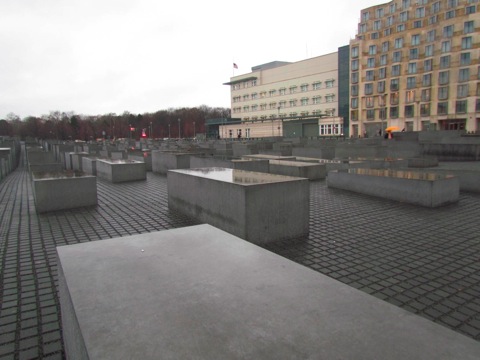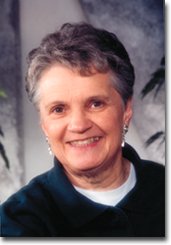
A Beautiful Place
A Horrible Past– Lake Wannsee, Berlin
By Doreen Kerby
During my last trip to Germany I was invited to stay at the American Academy in Berlin. It is a private center for advanced study in the humanities and the arts, established after the fall of the Berlin Wall as a symbol of peace. The Academy’s mission is to promote greater understanding and dialogue between academics from the United States and Germany. Leading scholars are invited to live at the Academy’s Hans Arnhold Center, which is located on beautiful Lake Wannsee in one of the most exclusive residential areas in Berlin.
The Academy’s lakeside villa was once the home of a distinguished Jewish banker, Hans Arnhold. The family fled to New York at the outbreak of WWII, after which the villa was appropriated by the Nazis and became the residence of the Third Reich’s Minister of Finance. 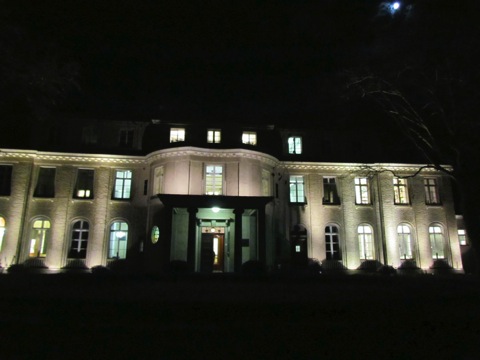
On the other side of this beautiful lake, almost directly across from the Academy, is the Wannsee Conference Memorial - a house with a horrible past. After their rise to power in 1933, many high–ranking Nazi officials settled in the prestigious Lake Wannsee area. In late 1940, the German SS purchased the Villa Marlier. On January 20, 1942 it was the setting for an event of unparalleled evil in the history of humanity. Fifteen people took part in the Wannsee Conference chaired by Richard Heydrick. The only item on the agenda was “the final solution to the Jewish question”.
The Wannsee Conference confirmed that the planned deportation of up to 11 million people was merely a preparatory measure, with the final goal being the complete extinction of all forms of Jewish life. 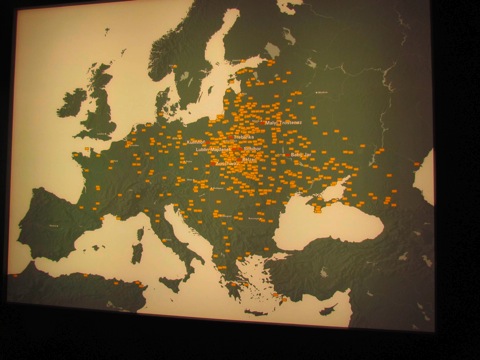
In 1947 the details of the conference were discovered in the Foreign Ministry files. They are now on permanent exhibit at the Wannsee Conference Memorial, supported by images that are disturbing and haunting. Every aspect is portrayed - starting with the deprivation of rights in 1933, the deportations, confinement to ghettos, and the murder of Jews in German-controlled territories. As depressing as the exhibit is, it is a “must- see” for visitors to Berlin.
Another historic villa on beautiful Lake Wannsee was owned by artist Max Liebermann (1847-1935). He had studied law and philosophy before becoming a painter and professor. Liebermann studied art in Paris and the Netherlands and served as a medic with the Order of St. John's’ in the Franco-Prussian War. He then returned to Berlin where he remained until his death in 1935.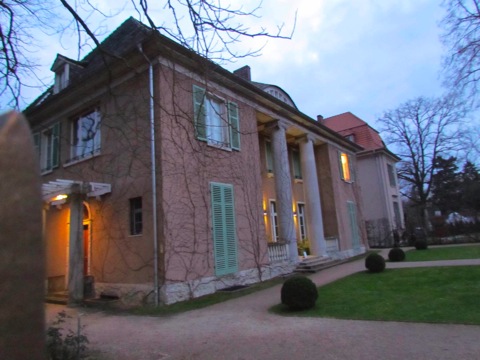
Liebermann was born of Jewish parents but did not practice the Jewish faith. He was one of Germany’s most honored artists and was President of the Prussian Academy of Arts (1920-32). In 1932 he was forbidden to paint by the Nazis and all his works were removed from museums and private collections.
Martha Lieberman was forced to sell the villa in 1940. The price was greatly undervalued and she didn’t even receive payment. At the age of 84, hours before she was due to be deported to Theresienstadt, she committed suicide.
On April 30, 2006, the Max Liebermann Society opened a permanent collection in the Liebermann family’s villa. In the upper floor there are 40 beautiful paintings of the garden and villa on display. The ground floor documents the history of the Liebermann family. Impressed by high attendance and positive press reaction, the Berlin Parliament voted unanimously that the villa be used as a permanent location for Liebermann’s work. In September 2002, 3,000 Berliners visited the house and garden. The opening was entitled “Max Liebermann is Coming Home” and featured plans for the reconstruction of the property.
There is a Stolperstein marker commemorating Martha Liebermann near the Brandenburg Gate. These brass markers are set in the cobblestones as permanent memorials to victims of the Nazi regime. While most victims were Jewish, others included gypsies, homosexuals, Jehovah’s Witnesses, blacks, Christians who opposed Nazi rule, military deserters, and the physically and mentally disabled.
A Holocaust Memorial located near the Brandenburg Gate is also something every visitor to Berlin should experience. It is made up of 2,711 gray stone slabs that create a feeling of disorientation. Under this field of stelae, the Information Center tells the stories of the millions who faced the inhumanity of the Nazi Party.